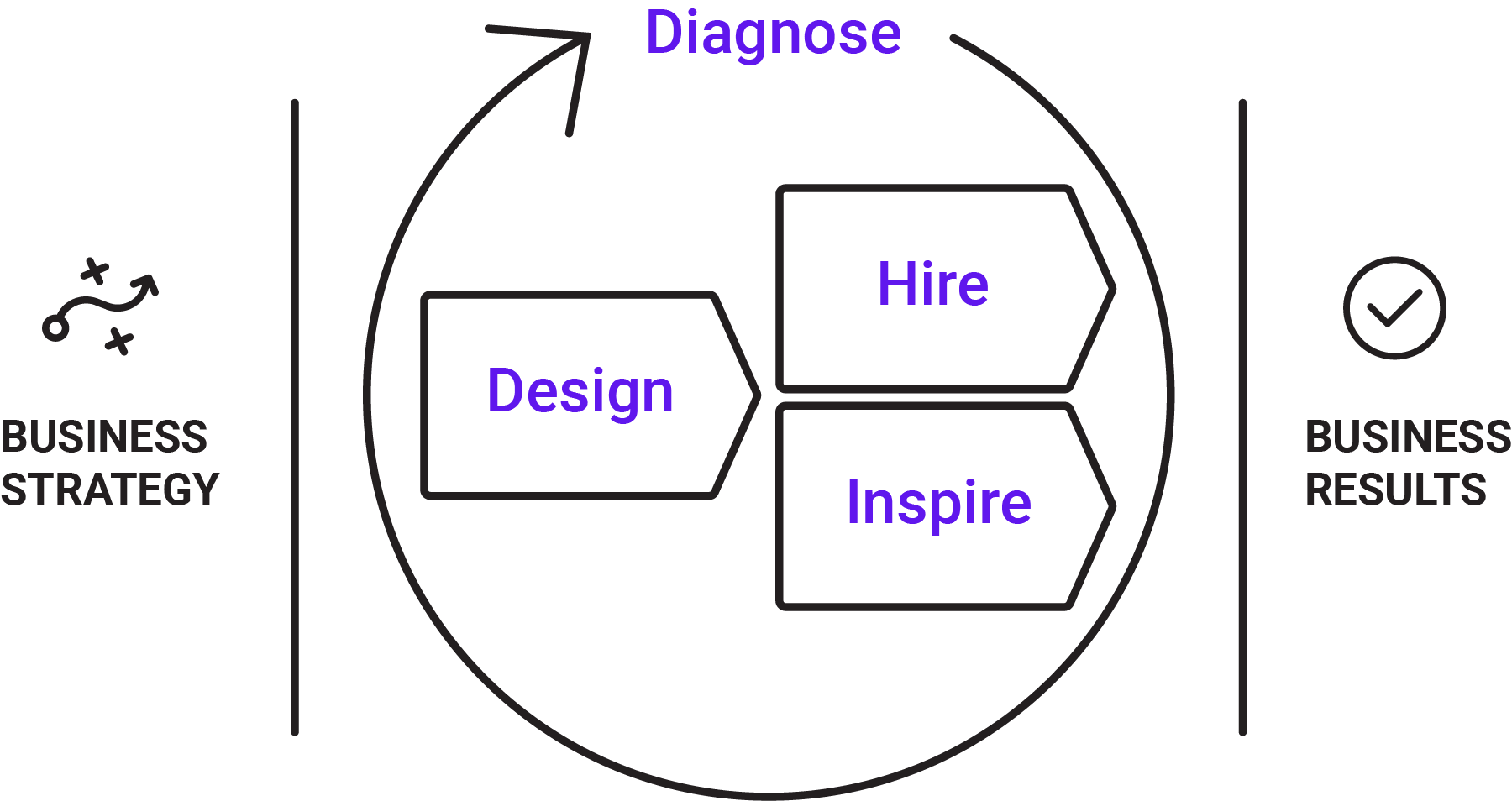The Diagnose Phase of Talent Optimization
Learn how growing businesses use Diagnose to measure and increase employee engagement – leading to higher productivity, fewer accidents, and less absenteeism.
Happy, productive employees drive successful companies.
Despite this, many businesses rarely measure employee engagement. Lacking engagement data to shed light on what’s working and what’s not, they tend to base talent strategy on feelings and intuition.
The Predictive Index’s “Diagnose” tool allows businesses to measure, analyze, and act upon employee engagement by using data collection and analysis.
Symptoms of Low Engagement
Have you ever visited a business and watched employees drag their feet as they walk in and punch the clock?
If you have, this is a picture of low employee engagement. Symptoms of low engagement include turnover, absenteeism, safety issues, OSHA violations, interpersonal conflict, and poor customer satisfaction.
Symptoms of High Engagement
On the other hand, at some workplaces, employees chatter excitedly. They are punctual, animated, and emotionally committed to doing their work well.
Competitors are often curious about a new player’s rapid rise to the top. They begin pouring money into new technology and more advertising, trying to catch up. However, the secret to the newcomer’s success is often the contagious energy and excitement of their workforce, not a truly differentiated product or service.
Companies with higher engagement typically see higher retention, more innovation, higher profitability, better rule following, fewer safety issues, and higher customer satisfaction.
How to Diagnose Engagement in your Workforce
Successful companies know that diagnosing employee engagement is crucial to success.
The big question among business leaders who are leveling up their talent strategy is this:
How can you fix something if you don’t know what’s broken?
The Diagnose Phase is Part Four of the Talent Optimization framework. It empowers businesses to measure critical people data, analyze that data within the context of their business, and craft specific solutions that get results.
Why is Diagnose Critical to Talent Strategy?
Companies who do not measure employee engagement find themselves behind the problem, treating symptoms such as high turnover or missed quotas without addressing the root causes.
The Diagnose method is like holding a magnifying glass to those blind spots to find the root cause of hidden people problems. Once you see the cause, you can make strategic changes to fix what’s not working while continuing to strengthen what is working.
Typically, when these insights are uncovered in the Diagnose phase, the solutions can be found in the other three parts of Talent Optimization: Design, Hire, and Inspire.

When a company collects and analyzes their people data, they can quickly understand what need to be done before major problems arise. Their proactivity in addressing issues rather than letting them fester shows employees that they are valued and respected, leading to a more productive and engaged workforce.
How the Diagnose Phase of Talent Optimization Works
Within the Diagnose method, there are three essential components that repeat continuously in a loop:
- Measure
- Analyze
- Prescribe
Measure
Just as a doctor runs lab tests and bloodwork to diagnose a patient, a business must do the same to measure the health of the organization. This is referred to as “measuring what matters.”
Companies discover what’s working and what needs improvement by measuring employee engagement through The Employee Experience Survey.
The survey provides granular feedback on their teams’ scores – and those scores’ impact on engagement – in five key areas:
- Engagement: Emotional commitment
- Job: The day-to-day role
- Manager: Their direct manager
- People: The people they work with
- Organization: The company as a whole
This feedback provides insights into areas where they are excelling while uncovering opportunities for improvement.
Analyze
After a The Employee Experience Survey, a company can pinpoint which topics have the most impact on engagement which can lead to focused conversations aimed at getting to the root of the problem.
Working backward from an unfavorable business condition, such as high turnover, can also be helpful.
In the Analyze step, a company may find many places that have room for improvement. In that instance, it is key to prioritize which problems need immediate attention.
The following questions can help identify which problems to solve first:
- How big is the problem?
- This helps to separate the big problems from the smaller ones allowing the company to focus on what needs to be solved first.
- Does this problem really matter?
- If the issue is not having a big impact on business outcomes, it can likely wait until more pressing issues are resolved.
- How many employees are impacted?
- Determining the scale of the issue can help prioritize improvement implementation. For instance, if a company’s engagement score reveals that only 10% of the workforce is highly engaged, that’s a high priority issue and should be addressed immediately before it results in mass turnover.
- What caliber are the affected employees?
- High performing employees who are not engaged are at risk for the worst kind of turnover: regrettable turnover. It’s important to address that disengagement first before they leave the company for better opportunities.
- How many teams are impacted?
- Analyze how many departments are impacted by an issue. For example, if one department is struggling with their Manager, that single manager may need more training and support, but if several departments report struggling with their Managers, there may be a larger cultural issue at hand.
- Is there a pattern or repetition?
- Looking for a pattern or theme can help get ahead of a problem before it becomes a bigger issue. If there is a certain area where the same problem happens again and again, it’s time to examine that repetition. Find the patterns. For example, is disengagement endemic during employees’ second year of service due to underdeveloped leadership development programs?
Prescribe
During the Prescribe part of the cycle, a plan of action is made to correct and improve issues discovered in the Measure and Analyze steps.
Leaders who successfully turn their companies around from widespread disengagement must summon the courage to make the necessary changes within the organization; an advisor versed in these talent optimization steps can provide a great deal of change management support at this stage.
The benefits of positive change are, of course, innumerable.
How to Start Diagnosing Employee Engagement At Your Organization
Low engagement isn’t just a matter of perception. It’s a reality with real costs to your organization.
The first step: Diagnose.
If you would like to learn more about how we are helping organizations utilize talent optimization to create a competitive advantage for their business, give us a call, or drop us an email, we would welcome the opportunity to learn more about your business and the challenges you are facing.
About Jeff
Jeff has over 30 years of strategic planning, business development, and business transformation leadership experience. Having worked with mid-market, closely-held and family-owned businesses his entire career Jeff has a unique understanding of how these enterprises operate and the challenges they face.
He is passionate about working with business leaders to build strong cultures while developing and executing strategies that deliver exceptional results that benefit all the company’s stakeholders. Jeff’s hands-on approach to working with companies begins with a commonsense approach to strategy development.
With extensive experience in organizational turnaround and growth Jeff follows a defined process (disciplined, focused, intentional) to guide clients from strategy to execution. His experience covers a multitude of industries, with an in-depth understanding of automotive manufacturing.
Jeff holds a Master’s in Business Administration from the Capital University School of Management and earned a Bachelor of Arts in Business Administration and Management from Ohio Dominican University.




